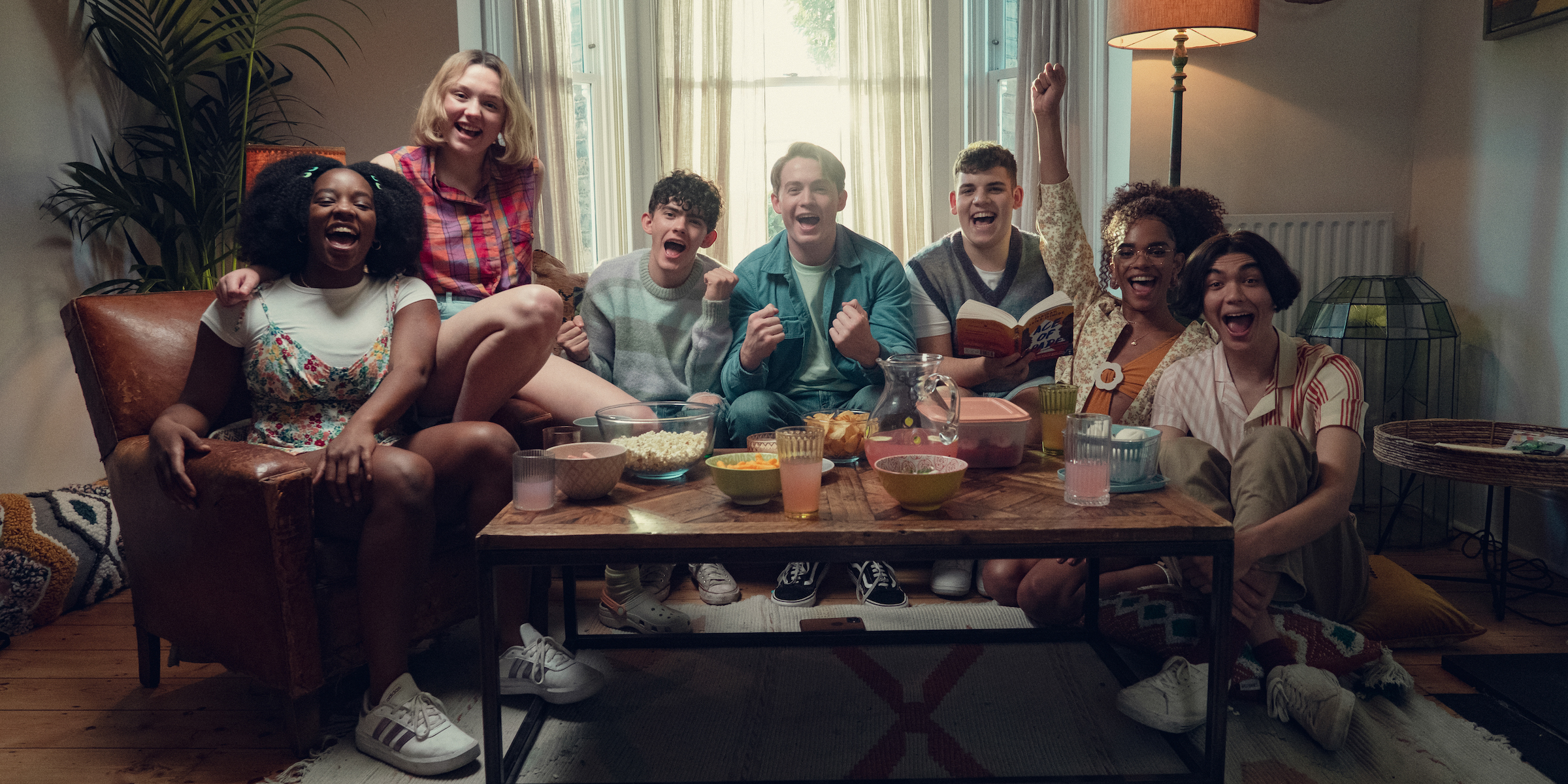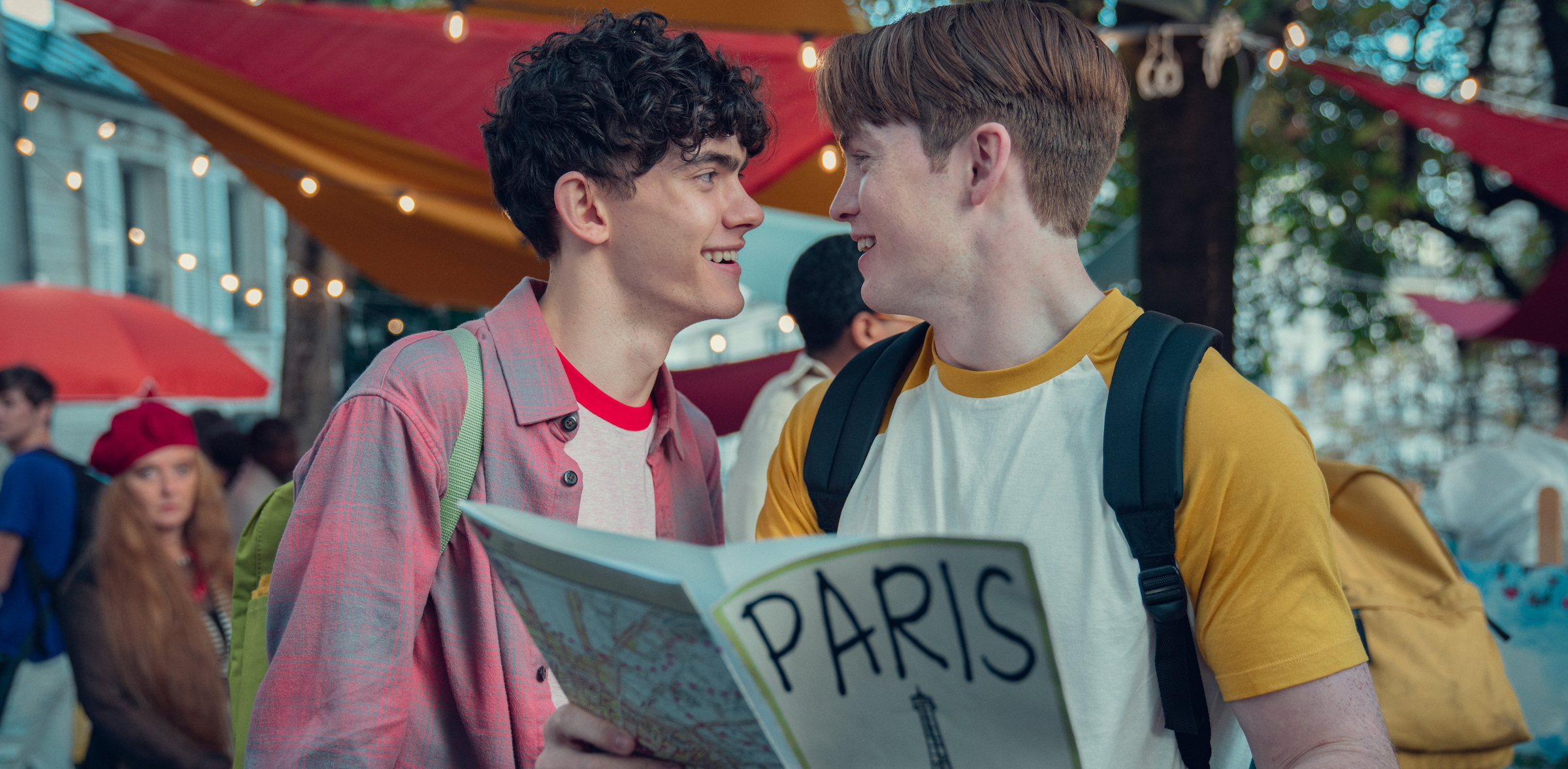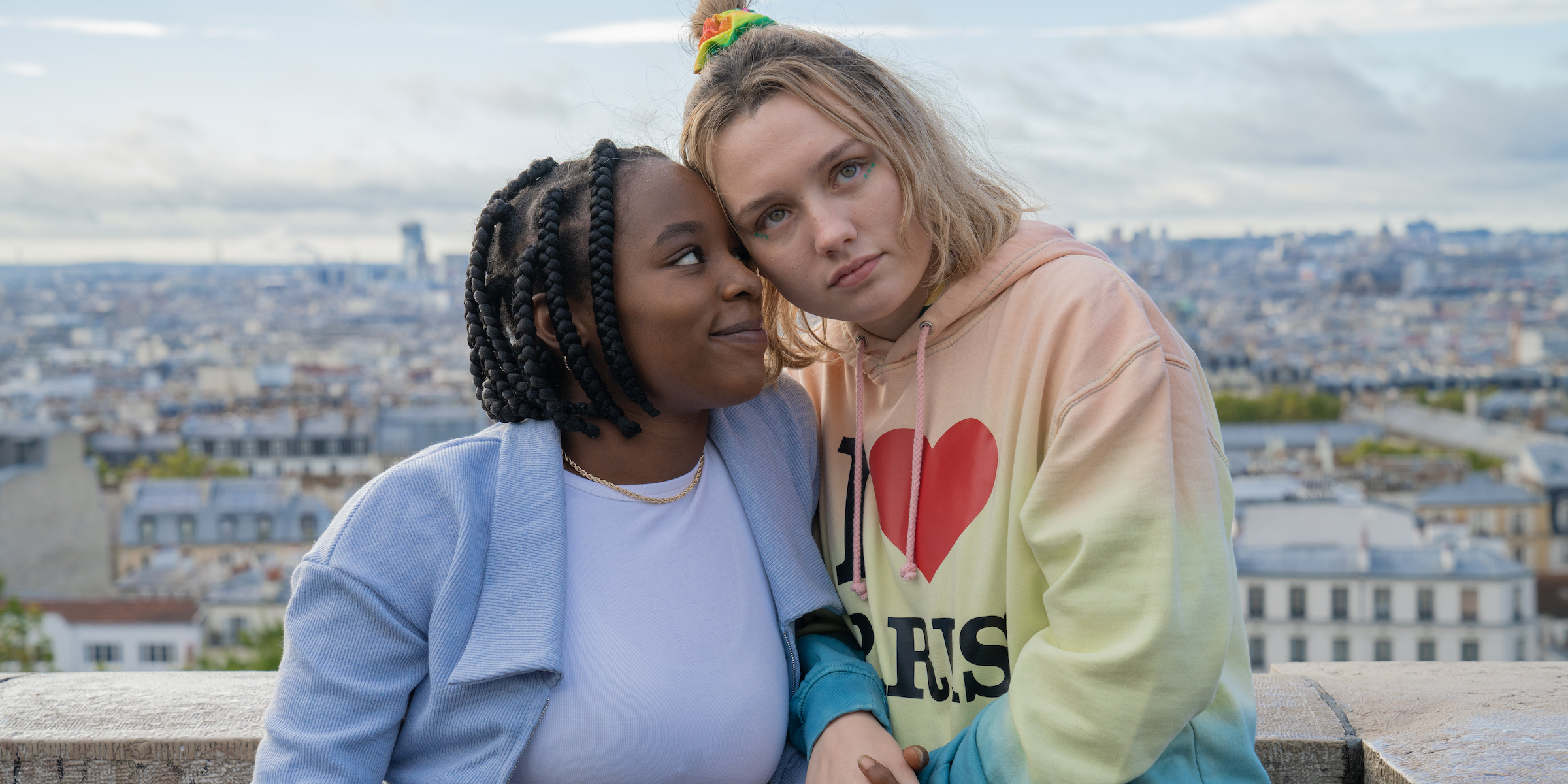
Patricia is from a very tiny town in Brazil. So small, in fact, that not one person was openly queer at her high school. She felt a sense of pressure to figure out her identity before she went to college, but she just felt very alone.
By the end of college, says Patricia, now 26, “Here I am with a communication degree in my hand and no idea about myself." Until she watched Heartstopper for the first time last spring, the day the series came out on Netflix. She started to examine her own sexuality alongside one of the main characters, Nick. “I had a very light feeling, like it was something that would make me feel good,” she says. “I needed for the story to not break my heart. Because that's the thing that I always hear when it comes to queer television in general: There's always this ghost of negativity.”
Heartstopper is a British romantic dramedy that began as a webcomic in 2016, later becoming a series of graphic novels of the same name beginning in 2019, all written and illustrated by Alice Oseman. The show follows Charlie (Joe Locke) as he falls for Nick (Kit Connor), a popular rugby player who he sits next to in class. Charlie, nerdy and awkward and sweet, was outed last year at school and bullied for being gay. He assumes Nick is straight (as does Nick, for that matter), but soon Nick starts to reciprocate his crush.
The first season was released last April to critical acclaim, becoming one of Netflix’s most-watched English titles at the time. It quickly accumulated a cult following among young queer viewers around the world, adding healthy numbers to the already fervent fan base of the original webcomics. (One million print copies of the series have sold worldwide to date.) The second, highly anticipated season came out on Netflix on Aug. 3 to more glowing reviews.
Unlike the many fans who eagerly anticipated the adaptation of their favorite comic, Patricia is one of the scores who discovered the source material because of the show. Within a week or so of watching Heartstopper, she had read the graphic novels. A scene in Volume 3, upon which most of Season 2 is based, stood out to her. In the book, art teacher Mr. Ajayi (Fisayo Akinade) and science teacher Mr. Farouk (Nima Taleghani) chaperone a school trip to Paris. They stumble upon Nick and Charlie making out in the hotel hallway after curfew and send them back to their room.
“Come on,” Ajayi says to Farouk after the boys have left. “You never snuck off with a boy on a school trip when you were their age?”

“Well, when you don’t come to terms with your sexuality until your mid-twenties, you tend to miss out on all those beautiful gay teenage experiences,” Farouk says. “Probably a bit late for me to have any youthful moments of discovery.”
“Hm… I don’t think there’s an age limit on those, to be honest,” Ajayi says. He flirts with Farouk, and the two head off to their room together.
The scene remains unchanged onscreen, imbued with the show’s candy-colored palette. It resonated deeply with Patricia, who didn’t fully realize her asexuality and bisexuality until adulthood.
“Heartstopper has changed my way of not only looking at others, but looking at myself,” she says. “So I am more kind to myself now. And I don't get mad at myself for not knowing the answer about something specific about my identity. And I know that it doesn't have to be something set in stone.”

For Oseman, who also writes and co-executive produces the show, the inclusion of queer teachers was deeply important. In UK schools, Section 28 barred queer teachers from openly sharing their identities until it was repealed 2003. In Kent, where Oseman is from and where the comics are set, an adapted form of Section 28 remained in effect until 2010, when the now 28-year-old was a teenager. Given that context, Oseman wrote in the show’s press notes, depicting queer teachers onscreen is “radical and revolutionary.” And for people like Patricia, seeing young adults like the teachers realize their identities later—in a show predominantly about high schoolers—can be life changing.
And Heartstopper has changed countless lives—including, of course, Oseman’s own. Her teenage years didn’t exactly brim with queer joy. Whenever she works on Heartstopper, given the largely teenage cast and younger-skewed fan base, she’s reminded of what she didn’t get to have as a teen. It’s helped her see that she has some healing to do, once she’s finished working non-stop on this story. (Netflix already renewed Heartstopper for Season 3, and Volumes 5 and 6 of the webcomic are still forthcoming.)
Oseman also incorporated a particularly personal new element into Season 2. Isaac (Tobie Donovan) has been a true-blue member of Charlie’s core friend group—also including Tao (William Gao) and Elle (Yasmin Finney)—since day one. He always has his nose in a book, and this season, he comes to the gradual realization that he, like Oseman, is both asexual and aromantic, meaning that he doesn’t experience sexual or romantic attraction to anyone. (Asexual and aromantic characters haven’t been featured in the comics yet.)
“It feels really lovely, to be honest, to be able to give that representation that I didn't have as a teenager and that most, if not all, teenagers don't have still,” Oseman says on a video call from Kent. “There's hardly any ace or aro representation in any media, but particularly in TV and film.”
In place of romantic love, Oseman wants to fill her life with the kind of platonic love that, in the Heartstopper world, glues Charlie, Tao, Elle, and Isaac together and buoys them through bullying, a gender transition, and general teenage angst. In Season 2, their circle expands to include Nick, Imogen (Rhea Norwood), Tara (Corinna Brown), and Darcy (Kizzy Edgell). It’s a chosen family and a warm bubble.

“Having a big friendship group at the core of Heartstopper was always my goal,” Oseman said. “And making sure that it's not just idealizing romantic love as the ultimate goal of everything.”
The Heartstopper fandom, for its part, has catalyzed friendships around the world. (It has also had its fair share of toxicity: Kit Connor, who plays Nick, felt pressured by fans to come out as bisexual before he was ready.) One of Patricia’s best friends now is from France, and the other is from Spain; she met both through their mutual love of the show. Adam, 17, from Hungary, met some of his best friends through watching the show—and found his current romantic partner.
Hungary has seen the introduction of increasingly severe anti-LGBTQ+ legislation in recent years. For Adam, it’s starting to feel like more and more rights are being taken away. The show has been a balm.
“Before Heartstopper, I was just really trying to hide my identity a lot,” he says. “I didn't even come out to anyone before that. I was also considering completely repressing my feelings and living a fake life.”
A few weeks after watching the show, though—inspired by Nick’s coming-out scene at the end of Season 1—Adam came out to both his mom and grandma. It went well.

“I just really feel free in my identity,” he says. “I talk a lot about this topic. I came out to more people. I have a rainbow flag above my bed. It's just really all out.” Heartstopper “really changed me in a lot of positive ways.”
Serena, 16, from Marseille, France, felt like a scared little girl with no confidence before watching Heartstopper. Like Charlie, she had been bullied, and like Nick, she was worried about what people might think of her if she was open about her sexuality.
“Heartstopper felt like a fresh wave, and it just hit me in the face and opened my eyes about so many things,” she says. “It really helped me figure out myself, explore things about myself, and gain confidence and be proud of who I am. That made me realize that no matter where you're from, who you love, or what you identify as, well, it doesn't matter because you can still have love and be loved.”
More Must-Reads from TIME
- Cybersecurity Experts Are Sounding the Alarm on DOGE
- Meet the 2025 Women of the Year
- The Harsh Truth About Disability Inclusion
- Why Do More Young Adults Have Cancer?
- Colman Domingo Leads With Radical Love
- How to Get Better at Doing Things Alone
- Michelle Zauner Stares Down the Darkness
Contact us at letters@time.com



